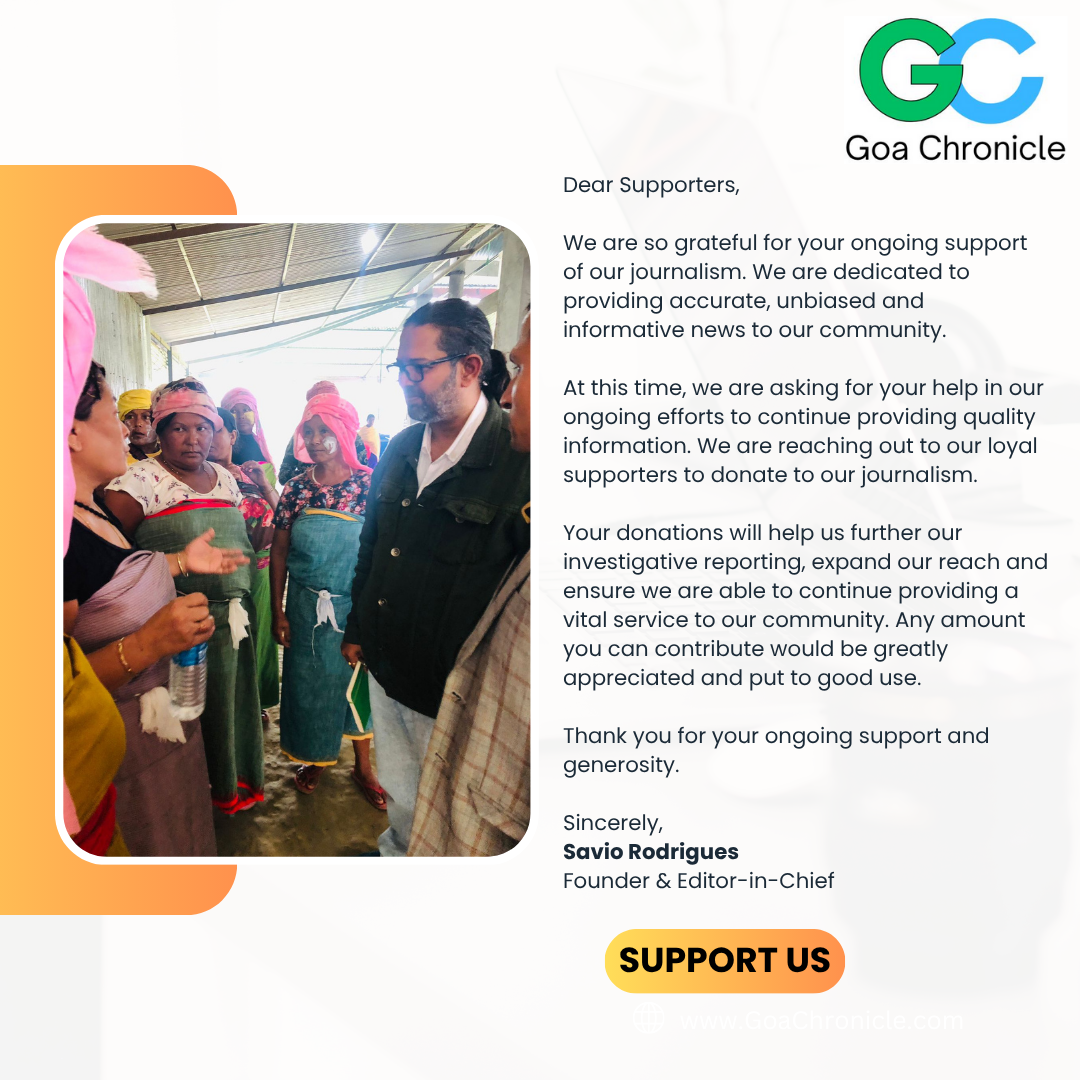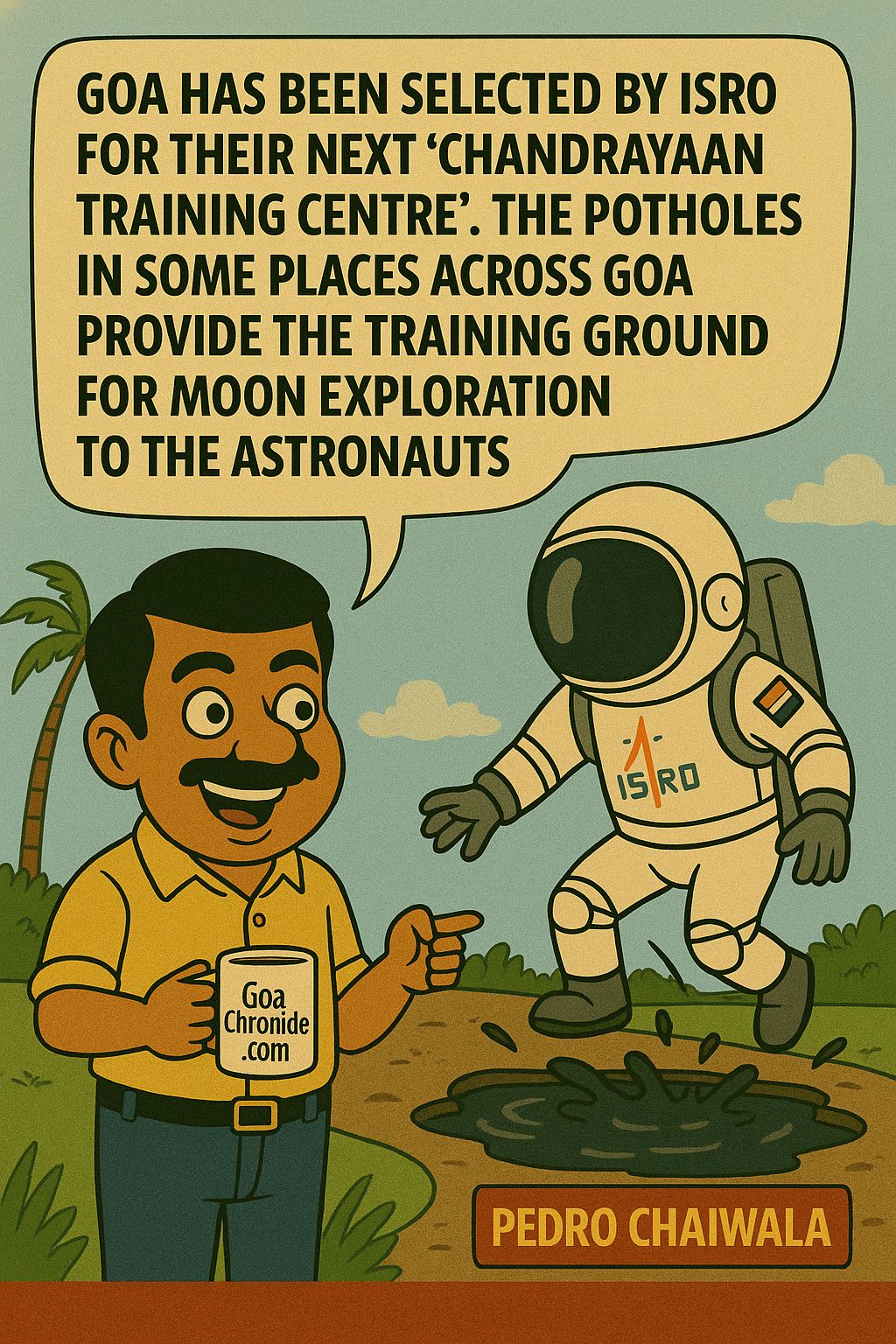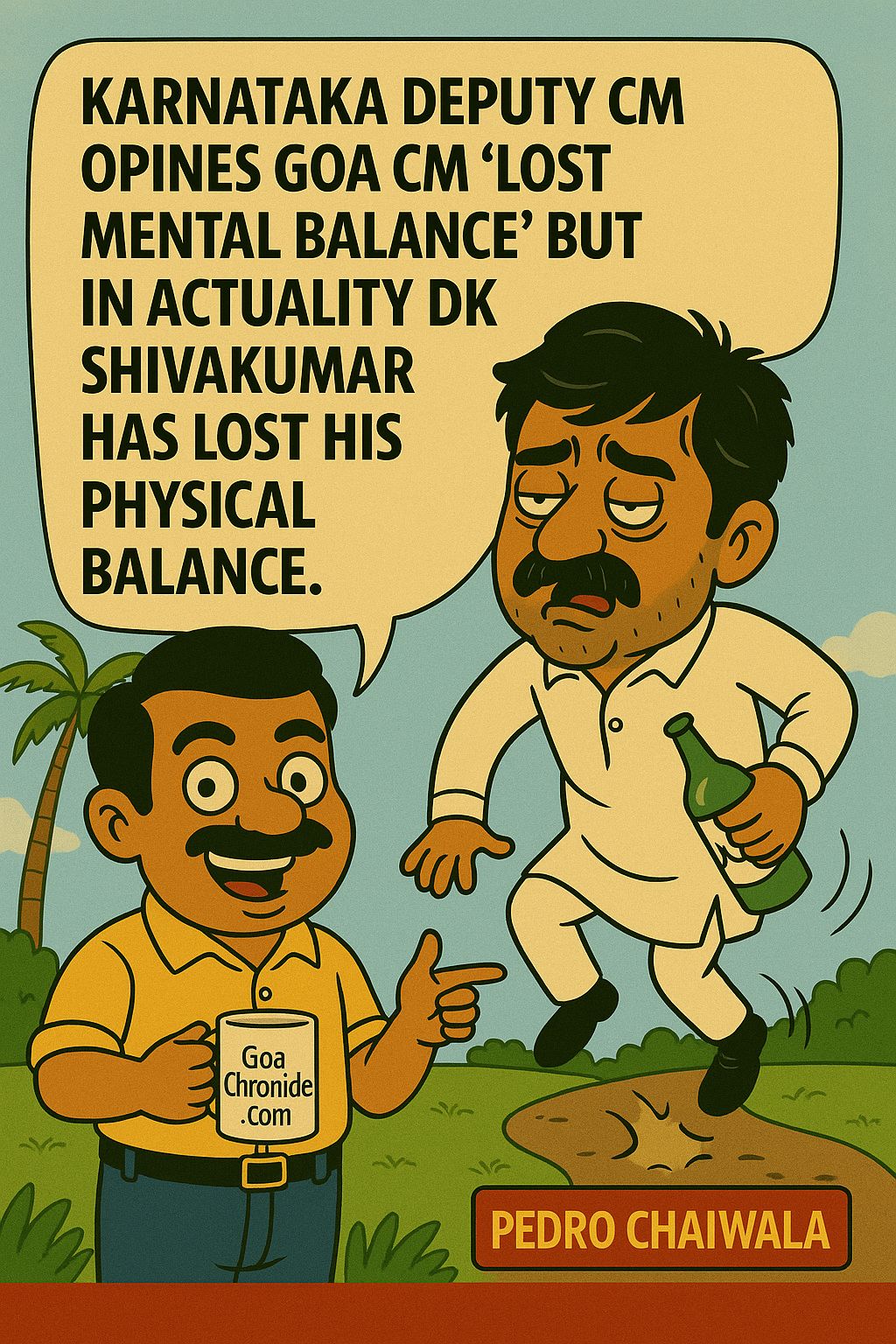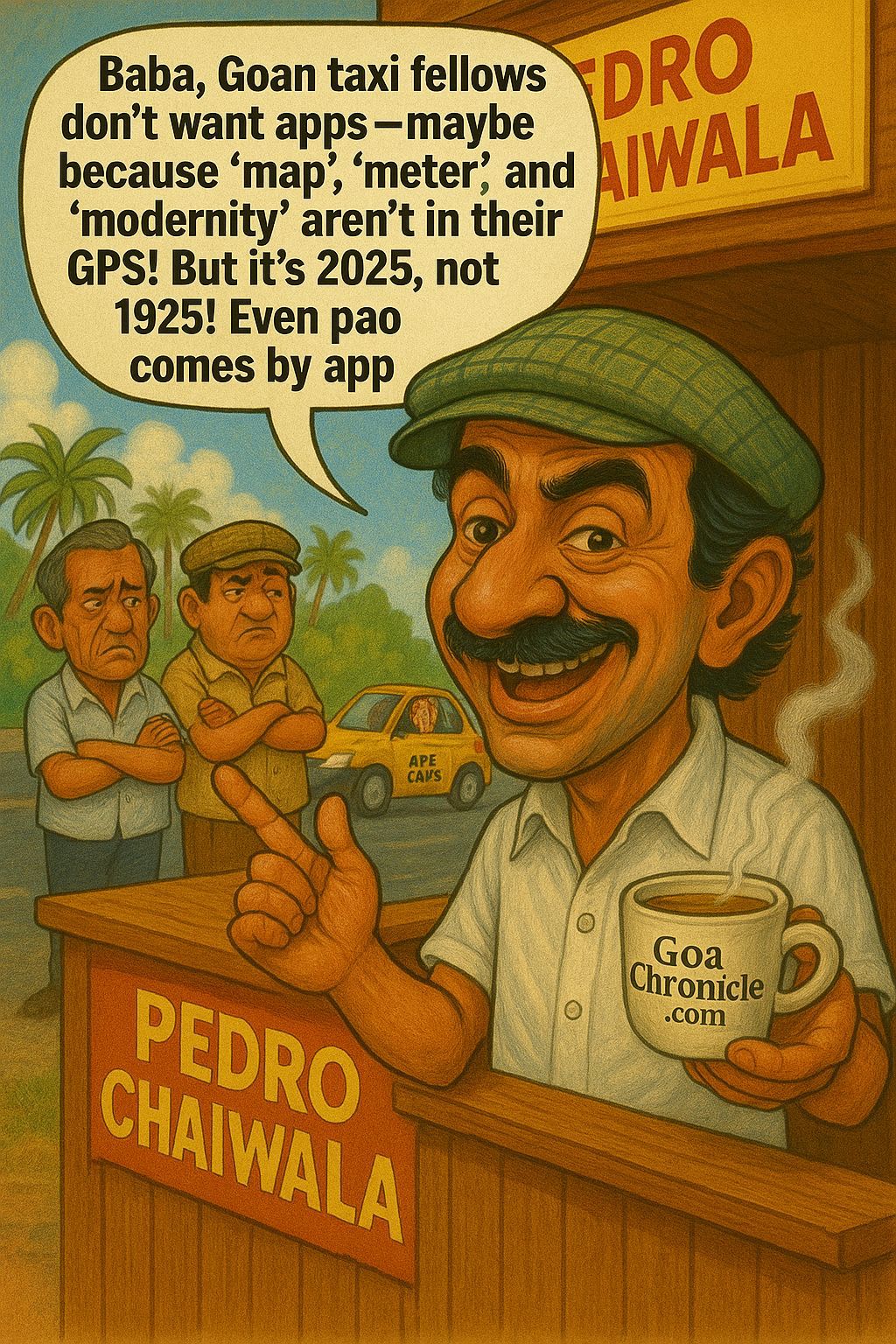Goa’s greatest wealth is not its beaches, nor its mines, nor even its tourism – it is water. From the gentle Mandovi and Zuari rivers to the monsoon-fed wetlands and hidden aquifers beneath its red soil, Goa is a land blessed with abundance. Yet, paradoxically, the same state that receives over 3,000 mm of rainfall annually faces water scarcity, erratic irrigation, and contamination crises almost every summer. Goa is sitting on a liquid goldmine but has failed to realise that water, not land or minerals, is its most strategic economic asset. If Goa wants to secure a sustainable and self-reliant future beyond the boom-and-bust cycles of mining and tourism, it must urgently focus on building a water economy – a model that treats water not merely as a resource to be consumed, but as an ecosystem to be managed, monetised, and modernised.
Goa receives nearly 8,000 million cubic metres of rainfall every year – enough to meet its domestic, industrial, and agricultural needs many times over. Yet, less than 10 percent of this water is captured or stored effectively. The rest flows wastefully into the Arabian Sea. This is not a crisis of nature; it is a crisis of management. During the monsoon, rivers overflow and paddy fields flood, but come March, taps run dry and tankers line up in housing colonies. It’s the story of a state that earns plenty but spends recklessly. The irony is that water today is more valuable than iron ore. Across the world, nations are trading in what economists call “blue gold.” Israel built an entire economy around desalination and water technology exports. Singapore turned its water scarcity into a self-sufficient industry through NEWater. Even desert nations like the UAE have turned water into a managed asset. Goa, on the other hand, has allowed its rivers to be polluted by sewage, mining silt, and urban waste, eroding both ecology and economy.
For too long, water in Goa has been treated as a free commodity rather than an economic resource. Building a water economy begins with a mindset shift – viewing water as capital. That requires three fundamental pillars: management, monetisation, and modernisation. The first is water management. Goa’s rivers are its arteries, but they are managed by multiple departments that rarely work in coordination. A unified Goa Water Authority should integrate river basin planning, groundwater regulation, and watershed management under one framework. Every village and panchayat should maintain a water budget – a simple yet powerful idea where local authorities track how much water enters through rainfall, wells, and springs, and how much exits through consumption, leakage, or runoff. Goa, with its smaller size and higher rainfall, could achieve self-sufficiency faster than any other state if it adopted such an approach.
The second pillar is water monetisation – creating sustainable economic value from water without commodifying access. Goa has the potential to become India’s water innovation hub. It can attract industries around desalination, wastewater recycling, and natural spring bottling. The hospitality industry can adopt desalination and greywater reuse technologies powered by solar energy, reducing stress on public supply. Goa’s natural springs and hills offer opportunities for premium bottled spring water under a “Goa Pure” brand for tourism and export. Treated wastewater can power inland aquaculture, giving rise to eco-fisheries that create rural employment while conserving freshwater for drinking. The state can also build a thriving water tourism sector – kayaking through Cumbarjua’s mangroves, restoring traditional ponds and bunds for heritage walks, and developing floating eco-farms in Divar. These are not fanciful ideas; they are viable models of a circular water economy. If Israel can earn over US$2 billion annually from water technology exports, why can’t Goa, with its natural advantage and technological talent, brand itself as India’s “Water Smart State”?
The third pillar is modernisation. Goa loses more than 35 percent of its water through leaks, illegal connections, and inefficient systems. This non-revenue water loss is a silent drain on both the economy and the environment. The state must adopt smart metering, GIS-based network mapping, and AI-driven leak detection to account for every drop. Agriculture, which consumes about 70 percent of Goa’s water, can be revolutionised with micro-irrigation, soil moisture sensors, and incentive-based water credits – where farmers who save water earn tradable credits or financial rewards. The government should actively encourage startups working in water technology, IoT-based monitoring, and smart irrigation by offering tax benefits and innovation grants. Imagine a Goa where schools teach water conservation as a science, where students develop apps that monitor well levels, and where wastewater treatment plants become profit-generating micro-industries.
This vision is not just about economics- it’s about security. Goa’s population is growing, industries are expanding, and the tourism sector is consuming vast quantities of water. Per capita water availability in Goa has already dropped from 4,500 cubic metres in 1980 to around 2,200 cubic metres today. By 2040, Goa could face chronic water stress if trends continue. Add climate change to this equation – erratic monsoons, rising sea levels, and saltwater intrusion into coastal aquifers – and the threat becomes existential. A water-secure Goa is not optional; it is inevitable if the state wishes to preserve its prosperity, public health, and environment.
A true water economy would integrate conservation with commerce. It would create a governance framework where every development – be it industrial, residential, or tourism-related – is evaluated based on water sustainability. The government should establish water credits for industries and hotels that recycle or reuse a portion of their consumption, issue blue bonds to fund river rejuvenation and wetland restoration, and foster public-private partnerships for water infrastructure under strict sustainability standards. In parallel, the state must encourage community-led “water banks” where local bodies digitally track storage, recharge, and consumption. This decentralized model would not just conserve water but also empower citizens to become stakeholders in water management.
The transformation must begin now. Goa’s future prosperity will not be determined by the number of tourists it welcomes or the villas it builds, but by how much clean, reusable water it can store and protect. Every river in Goa – from the Mandovi to the Chapora – tells a story of abundance lost and abundance recoverable. Building a water economy is not an environmental luxury; it is an economic necessity and a moral responsibility. In a world where wars are increasingly fought over water, Goa has the opportunity to become a model for water peace – a state that values every drop, recycles every litre, and invests every rupee in its most precious resource. The day Goa runs out of water, its paradise will lose its song. But if it builds a water economy today, that song will echo for generations – a melody of sustainability, innovation, and resilience flowing through every Goan heart and river.































